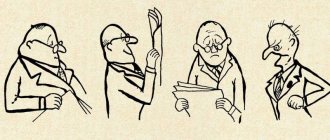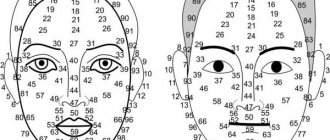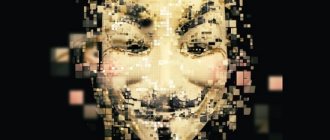A person’s personal qualities determine his character. The set of traits can be very different, as well as the predetermining factors of actions. However, knowing the typological picture of character, one can predict a person’s behavior and his reaction to various stimuli.
Not only his mental properties, but also his appearance, period of birth, handwriting and even appearance will help determine a person’s character. Of course, despite a certain typology, the characteristics of an individual may differ. Despite this, knowledge of character types will help you find the right approach to a person, predict his reaction, behavior and communication in a given situation. In our article today you will find useful information about human characters and how to correctly determine them.
The meaning of a person's character
Character is a stable structure of mental properties that predetermine a person’s behavior, life goals, his reaction to stimuli and communication.
The importance of character is difficult to overestimate. It is he who is decisive in the construction of human destiny, choice and freedom.
In psychology, a person’s character is considered an individual combination of certain personality traits. A set of qualities determines the attitude of an individual to the entire environment, which is manifested in the actions and behavior of a person.
Character means a lot in a person's life. Knowledge of the typological picture of characters is necessary not only to build communication with the chosen person, but also to predict his goals and possible reaction. This is important, for example, when hiring, when the candidate is assessed from all sides.
Nonverbal cues
Information conveyed through words is verbal information. But there are also non-verbal signals and, by the way, they are more powerful, more straightforward and more expressive than words, transmit information from person to person. It has been proven that people receive most of the information about a person from non-verbal sources, and this amounts to 80%. Can you imagine, 80% is wow!
Very often, nonverbal information remains “behind the scenes” of your perception, because you do not know how to read and interpret it. But you want to learn this and no one will fool you with a nice word, because you will notice not only verbal signals, but also unpack non-verbal ones. So, let's begin.
Human character types
Human character has been studied from all sides for a long time. Long-term study, which was passed down from generation to generation among scientists, made it possible to derive typological pictures. Of course, different scientific schools provide a different list of human characters. There are a huge number of classifications, or, more precisely, attempts to classify all knowledge about human character into a single system. Unfortunately, none of them can be called deep and effective. Since a person’s individuality is not laid down at birth, but is acquired with age through the accumulation of experience, life situations, serious decisions, etc. However, it is customary to rely on several typologies. They are considered the most true, holistic and cover a large number of characteristics. We have described them below.
Types of human character: character types by body type
The famous German psychologist E. Kretschmer formulated his vision of human character types, based on the external data of the individual, namely, physique.
- Picnic type (cyclothymics) . Translated from Greek, “picnic” means a fat, plump person. According to the teachings of Kretschmer, picnics are people prone to obesity, of average height with a large head, short neck and a wide face with small features. This type is characterized by the following character qualities:
- emotionality;
- adaptability;
- sociability;
- contact;
- cheerful disposition, etc.
As a rule, with mental disorders, picnics are susceptible to manic-depressive psychosis.
- Athletic type (ixothymic). The athletic type is characteristic of athletes, in particular, wrestlers. These are tall people with developed strong muscles, broad shoulders, a strong skeleton and a powerful chest. Character traits are determined by the following traits:
- imperiousness;
- calm disposition;
- restraint;
- practicality;
- unimpressiveness;
- poor adaptability, etc.
As a rule, athletes do not like change. Mental disorders in people of this type are often accompanied by epileptic seizures.
- Asthenic type (schizothymic). People of the asthenic type are thin, have poorly developed muscles, long limbs, a flat chest and an elongated face. Asthenics are characterized by the following qualities:
- stubbornness;
- seriousness;
- isolation;
- poor adaptability to new life circumstances;
- gloominess, etc.
With mental disorders, asthenics are prone to schizophrenia.
Of course, Kretschmer’s classification of human characters is quite “rigid”. Therefore, it cannot be said that a person of one or another physique will necessarily have the listed character traits. In addition to external data, you also need to rely on other indicators. The positive or negative character of a person does not depend solely on his external structure.
Human character groups: Jung's classification
Perhaps the most famous classification of human character types belongs to the Swiss psychiatrist C. Jung. The scientist developed his typological picture based on the dominant mental functions of the individual. Its classification is based on a person’s belonging to the internal or external world. Character groups include only two classifications: introverted and extroverted types.
- Introvert. The introverted type is characterized by isolation, “withdrawal into oneself.” at the same time, the person is fenced off from the outside world, carefully analyzes his actions, behavior and events, often suspecting everyone of contradictory actions. Introverts have few friends because it is difficult for them to open up and connect with others. Such people are often lonely, but this does not bother them. Introverts love persistence and do not handle change well. These are very suspicious people with a high degree of anxiety. Introverts love to delve into themselves, listen to their own feelings and monitor their health.
- Extrovert. People of the extroverted type are characterized by openness, directness, and extreme sociability. They are active both in life and in communication. Extroverts have many friends and a large social circle. Loneliness is hard to bear. Extroverts love to travel, enjoy all the events and have an active lifestyle. They have little interest in their own health. Often extroverts become the life of the party, initiating meetings and parties that they love to plan. In everyday life, they are guided by subjective opinion, and not by circumstances.
Forms of human character depending on temperament
The characteristics of different temperaments are familiar to many from the school curriculum. Often it is temperament that helps to understand character traits, especially if it is clearly expressed. Since the pure type of temperament is quite rare, a mixed type can most often be observed. However, the degree of expression of the defining characteristics can say a lot and help to correctly orient further communication with a person.
- Choleric. Cholerics are characterized by a passionate, impetuous character. These are unbalanced people with frequently changing moods. They are characterized by emotional outbursts and rapid emotional exhaustion. Cholerics do not have a balance of nervous processes. Choleric people quickly get carried away with new things, however, they also quickly exhaust themselves. They often abandon what they started halfway, switching to a more interesting activity. Such people need constant “warming up” of interest so that it does not completely fade away.
- Phlegmatic person. Phlegmatic people are calm, calm, and unhurried. They are characterized by persistent mood. Such people slowly but diligently move towards their goal without changing it depending on the circumstances. Phlegmatic people are stingy with emotions, but they are purposeful and productive.
- Melancholic. Melancholic people are distinguished by vulnerability, worries and a very acute reaction to external factors. It is noteworthy that melancholic people hide their experiences deep inside themselves. Such people are very impressionable. As for performance, often self-doubt, extreme self-criticism and vulnerability prevent such people from successfully completing a task, although all the resources are available for this.
- Sanguine. Sanguine people are what are called “hot” people. They are mobile, emotional, often change their impressions and quickly react to all events. If they fail, sanguine people easily accept them and move on, setting new goals. As a rule, a distinctive feature of sanguine people is expressive facial expressions. If the work of a sanguine person is interesting, then productivity will be at the highest level. However, if the work is boring, then the sanguine person will quickly become completely indifferent to it.
What I found about myself on the Internet
I decided to test some of these methods for myself. The first thing I did was write my name on Google and find accounts on Twitter and Facebook. Then I opened Yandex and saw my Instagram profile on the first page.
Most of all I was surprised that I could not find the page on VKontakte.
However, my Facebook username is the same as VKontakte, so I found the account using Google without any problems.
In addition to pages on social networks, I found links to my materials on iPhones.ru and other sites where I worked before.
Thanks to Yandex.Images, I was able to find a profile photo on YouTube, and with it a link to my channel.
I did not look for myself in the register of entrepreneurs, since I had never opened an individual entrepreneur or LLC.
There is nothing about me in the databases of the Ministry of Internal Affairs, FSSP and Justice.
Using Google Academy, I found a link to my report at a scientific conference that was held at my institute.
As a result, knowing only my first and last name, I was able to find pages on social networks, place of study, work, scientific publications and photographs.
Topic: How to understand who called a phone number. 7 working ways
If you analyze social networks and try to find other photos, you can get even more information.
( 56 votes, overall rating: 4.48 out of 5)











